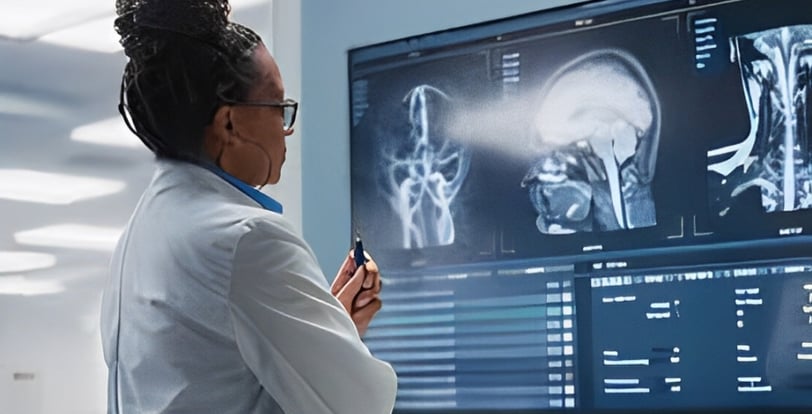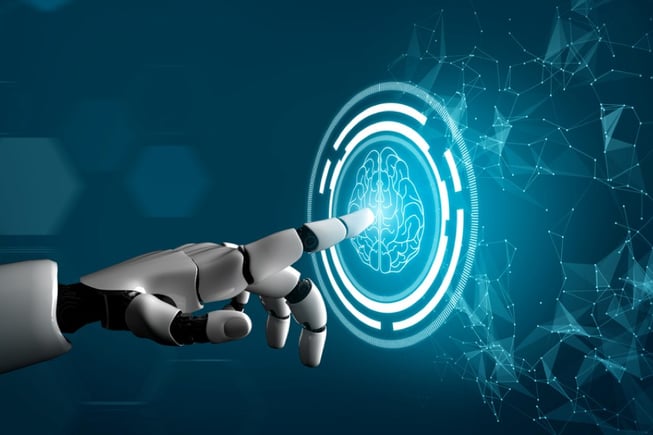The Role of AI and Machine Learning in X-ray Imaging
Artificial Intelligence (AI) and Machine Learning (ML) are transforming healthcare, particularly in the realm of medical imaging. X-ray technology, a cornerstone of diagnostic imaging, is benefiting greatly from these advancements. With AI and ML, we are seeing a revolution in how X-ray images are analyzed, interpreted, and utilized in patient care. These technologies not only enhance the efficiency of radiologists but also hold the potential to drastically improve diagnostic accuracy.
3/24/20254 min read


1. Understanding AI and Machine Learning in the Context of X-ray Imaging
Before diving into how AI and ML are used in X-ray imaging, it's important to understand these technologies.
Artificial Intelligence (AI) refers to the simulation of human intelligence in machines. In medical imaging, AI is typically employed to analyze and interpret data to mimic the decision-making processes of radiologists.
Machine Learning (ML) is a subset of AI that involves training algorithms to learn from and make predictions based on data. In X-ray imaging, ML algorithms are trained on vast datasets of X-ray images to identify patterns and features that might be missed by the human eye.
These technologies are being integrated into X-ray systems to automate image analysis, speed up diagnosis, and even predict diseases early on.
2. Enhancing Diagnostic Accuracy
AI and ML have the potential to revolutionize how we diagnose medical conditions using X-ray technology. Traditionally, X-ray images are manually interpreted by radiologists, which can sometimes lead to human error or oversight, especially with complex or subtle conditions. AI-driven systems can process images quickly and provide suggestions that might not be immediately apparent to the radiologist.
Early Detection: AI-powered tools can detect early signs of conditions such as lung cancer, osteoporosis, or fractures with remarkable accuracy. For example, in chest X-rays, AI algorithms can identify suspicious nodules that may be indicative of lung cancer, often identifying issues that a radiologist might miss in a busy clinical setting.
Improved Image Interpretation: AI systems can analyze X-ray images and highlight areas of concern for radiologists to review. This “second opinion” feature improves diagnostic accuracy, particularly in cases involving complex medical conditions, and speeds up the diagnosis process.
3. Reducing Human Error and Enhancing Efficiency
One of the most significant benefits of AI in X-ray imaging is the reduction of human error. In busy clinical environments, radiologists often face heavy workloads, leading to fatigue and the potential for missed diagnoses. AI can assist by reviewing X-ray images in real-time, alerting radiologists to any abnormalities or issues that require further attention.
Triage and Prioritization: In emergency settings, AI can prioritize which X-rays need immediate attention, ensuring that critical cases are reviewed first. This is particularly beneficial in situations like trauma centers or urgent care, where time is of the essence.
Automating Repetitive Tasks: AI can automate the more routine tasks associated with X-ray interpretation, such as measuring bone density or counting fractures. This allows radiologists to focus on more complex cases and clinical decision-making.
4. AI-Powered Post-Processing and Image Enhancement
X-ray images often require post-processing to improve their clarity and enhance diagnostic features. AI and ML can automatically adjust X-ray images to enhance visibility and provide higher-quality results.
Noise Reduction: AI algorithms can reduce noise in X-ray images, making subtle features more visible, which is essential for detecting small fractures or early-stage disease.
Image Reconstruction: In cases where the X-ray image may be incomplete due to patient movement or technical issues, AI systems can reconstruct parts of the image or fill in missing data, improving overall image quality.
3D Imaging and Advanced Visualization: AI and ML technologies are increasingly being used to generate 3D models from X-ray images, which is particularly beneficial in orthopedics and dentistry. These models can provide a clearer view of complex structures and make it easier for clinicians to plan surgeries or interventions.
5. AI in X-ray Screening and Early Detection
AI is proving invaluable in screening and early detection, particularly in the detection of conditions like tuberculosis (TB), lung cancer, and heart disease. By analyzing patterns in X-ray images, AI algorithms can identify risks earlier than traditional diagnostic methods, offering the possibility of treatment before conditions progress.
Lung Cancer Screening: AI is already being used to analyze chest X-rays for signs of lung cancer. By detecting abnormalities such as small tumors or nodules, AI helps clinicians make early diagnoses and start treatment sooner, improving patient survival rates.
Tuberculosis (TB) Detection: AI systems trained on large datasets of chest X-rays can automatically flag signs of TB, which is particularly beneficial in low-resource settings where radiologists may be scarce. The speed and accuracy of AI allow for quicker diagnoses, which is crucial for controlling the spread of TB.
6. The Role of AI in Reducing Healthcare Costs
One of the promising aspects of AI in X-ray imaging is its potential to reduce healthcare costs. With AI assisting in the diagnostic process, the need for multiple follow-up exams and misdiagnosis is minimized. Moreover, AI algorithms can process X-ray images quickly, leading to shorter wait times for patients and more efficient use of radiologists’ time.
Remote Diagnosis: AI-powered tools can be used in remote or underserved areas, where access to radiologists is limited. By providing accurate diagnostic support, AI helps reduce the disparity in healthcare quality between urban and rural areas.
Cost-Efficiency: AI systems can help streamline processes in healthcare facilities, reducing the time spent per patient and enabling quicker, more efficient workflows. This reduces costs for both patients and healthcare providers, making diagnostic services more affordable and accessible.
7. Future Prospects: AI in X-ray Imaging
The integration of AI and ML into X-ray technology is still in its early stages, but the potential is enormous. In the future, we can expect even more advanced algorithms that can not only detect and diagnose conditions but also predict patient outcomes based on their X-ray images.
Predictive Analytics: AI could analyze historical X-ray data alongside other patient information to predict the likelihood of disease progression, allowing clinicians to take preventive measures before a condition becomes severe.
Integration with Other Imaging Modalities: AI is already being integrated with other imaging modalities, such as CT scans and MRI, to provide a more comprehensive understanding of patient health. In the future, X-ray imaging could be seamlessly integrated with other diagnostic tools to create a holistic view of a patient's condition.
8. Conclusion
AI and Machine Learning are undeniably shaping the future of X-ray imaging, making it more accurate, efficient, and accessible. By assisting radiologists in analyzing and interpreting images, these technologies are improving diagnostic accuracy, speeding up patient care, and enhancing overall healthcare delivery. As AI continues to evolve, we can expect even more breakthroughs that will further revolutionize the role of X-rays in diagnosing and treating medical conditions.
For healthcare providers and patients alike, AI-powered X-ray technology offers a brighter, more efficient future in medical imaging.


Reference Website Links:
National Institute of Biomedical Imaging and Bioengineering (NIBIB)
Radiological Society of North America (RSNA)
Link: https://www.rsna.org
Nature - Machine Learning in Medical Imaging
National Library of Medicine - PubMed
MIT Technology Review - AI in Healthcare
Healthcare IT News - AI in Radiology
